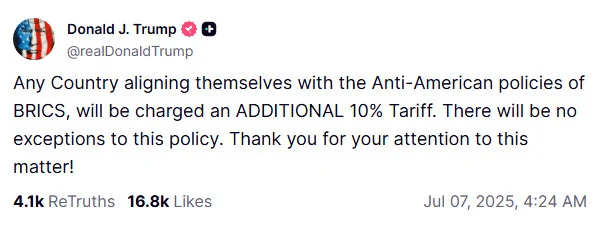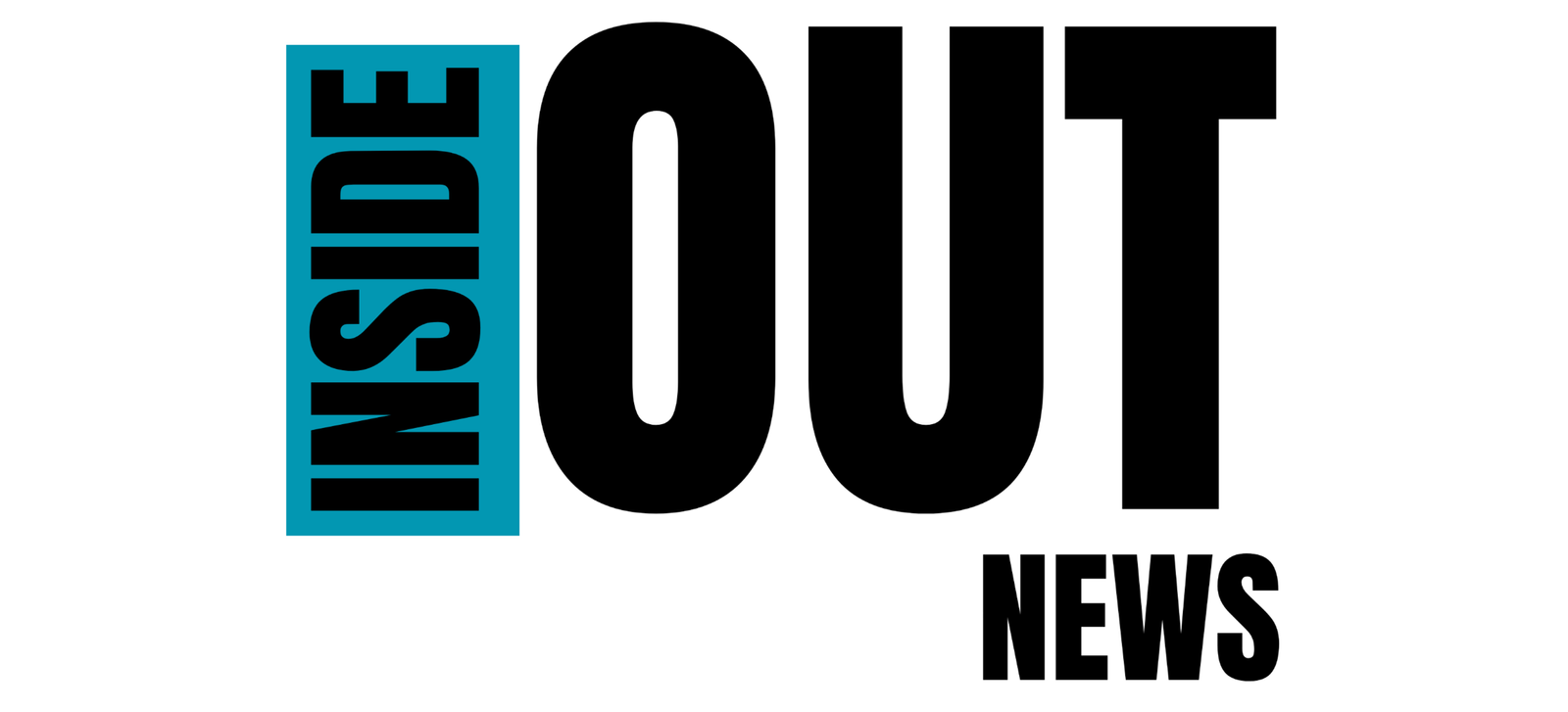Trump Threatens Tariffs as SA Faces R540 Billion Trade Risk

By: Kelebogile Matlou
United States President Donald Trump has issued a sharp warning to countries aligning with the BRICS bloc, vowing to impose an additional 10% tariff on them.
Posting on his Truth Social platform on Monday, 7 July,“Any country aligning itself with the anti-American policies of BRICS will be charged an additional 10% Tariff. There will be no exceptions to this policy,” he said. This threat comes at a critical time for South Africa, which is actively negotiating a trade deal with the United States in hopes of avoiding severe penalties under Washington’s reciprocal tariff policy, first announced in April.
On 2 April, Trump introduced a global tariff structure based on trade deficits with the U.S., including a 31% tariff on South Africa. Although this was set to begin on 9 April, the implementation was paused for 90 days, a grace period now nearing its end. During this period, the U.S. applied a flat 10% universal tariff, along with a 25% tariff on the automotive sector.
Despite several meetings between South African and U.S. trade officials, no agreement has been finalized. With the looming 31% tariff and now the threat of an additional 10% for BRICS countries South Africa faces a growing economic threat. The BRICS group Brazil, Russia, India, China, and South Africa expanded in 2024 to include Iran, the UAE, Ethiopia, and Egypt. Several of these nations, particularly Russia, China, and Iran, have strained relations with the U.S.
South Africa has also found itself under scrutiny from the Trump administration. Earlier this year, the country was the subject of direct accusations, including allegations of human rights abuses. Trump had previously warned the bloc of a 100% tariff if it pursued efforts to abandon the U.S. dollar in favor of a BRICS currency for bilateral trade. Although the bloc dismissed these claims, it has been discussing de-dollarisation since 2023, with countries like China and India promoting the use of local currencies in trade.
Despite this, the New Development Bank, the bloc’s financial institution, still relies heavily on the dollar, having invested more than R540 billion in member and developing states. Analysts warn that even the 31% tariff alone would eliminate all the benefits South Africa gains from the African Growth and Opportunity Act (AGOA) a trade program currently at risk of termination.
According to Frederick Mitchell, chief economist at Aluma Capital, South Africa exported an estimated R71.5 billion through AGOA in 2024, representing 46% of its total U.S. exports that year. The automotive sector alone contributed nearly R34 billion in exports under the Act.
Other major sectors like agriculture, iron, and steel would also suffer, resulting in widespread job losses and ripple effects across various industries. In June, the Department of Trade, Industry and Competition (DTIC) presented a new trade framework to U.S. officials aimed at averting the crisis. The framework tackled American concerns around non-tariff barriers, trade deficits, and two-way procurement. It proposed tariff rate quotas to exempt key exports such as autos, auto parts, steel, and aluminium from the harshest duties. South Africa has lobbied to cap tariffs at 10%, but with Trump’s latest stance on BRICS, that ambition now seems increasingly out of reach.
As tensions rise and deadlines loom, South Africa faces a potential economic shock one that could undo years of progress in trade and investment with the United States.


